Tuesday, December 4th 2018

NVIDIA Unveils GeForce GTX 1070 with GDDR5X Memory
It looks like NVIDIA bought itself a mountain of unsold GDDR5X memory chips, and is now refreshing its own mountain of unsold GP104 inventory, to make products more presentable to consumers in the wake of its RTX 20-series and real-time ray-tracing lure. First, it was the GP104-based GTX 1060 6 GB with GDDR5X memory, and now it's the significantly faster GeForce GTX 1070, which is receiving the newer memory, along with otherwise unchanged specifications. ZOTAC is among the first NVIDIA add-in card partners ready with one such cards, the GTX 1070 AMP Extreme Core GDDR5X (model: ZT-P10700Q-10P).
Much like the GTX 1060 6 GB GDDR5X, this otherwise factory-overclocked ZOTAC card sticks to a memory clock speed of 8.00 GHz, despite using GDDR5X memory chips that are rated for 10 Gbps. It features 8 GB of it across the chip's full 256-bit memory bus width. The GPU is factory-overclocked by ZOTAC to tick at 1607 MHz, with 1797 MHz GPU Boost, which are below the clock-speeds of the GDDR5 AMP Extreme SKU, that has not just higher 1805 MHz GPU Boost frequency, but also overclocked memory at 8.20 GHz. Out of the box, this card's performance shouldn't be distinguishable from the GDDR5 AMP Core, but the memory alone should serve up a significant overclocking headroom.
Much like the GTX 1060 6 GB GDDR5X, this otherwise factory-overclocked ZOTAC card sticks to a memory clock speed of 8.00 GHz, despite using GDDR5X memory chips that are rated for 10 Gbps. It features 8 GB of it across the chip's full 256-bit memory bus width. The GPU is factory-overclocked by ZOTAC to tick at 1607 MHz, with 1797 MHz GPU Boost, which are below the clock-speeds of the GDDR5 AMP Extreme SKU, that has not just higher 1805 MHz GPU Boost frequency, but also overclocked memory at 8.20 GHz. Out of the box, this card's performance shouldn't be distinguishable from the GDDR5 AMP Core, but the memory alone should serve up a significant overclocking headroom.
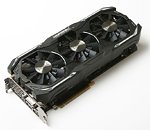
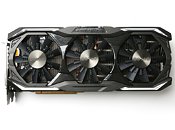
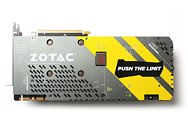
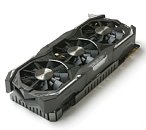
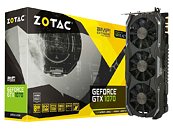
78 Comments on NVIDIA Unveils GeForce GTX 1070 with GDDR5X Memory
not again
Nvidia is not what they used to be or also they are burnt in with alot of cards after mining has ended its terror rounds.
Get a grip people. This thing has been always there since Radeon VE or 7000 and Geforce days.
What's the fuss about it? So what?
And as for using better memory on an old card, can someone explain why that is a bad thing? Look, here is item 'A' which we now sell with a better component. As long as price doesn't inflate.
Anyway, enough said.
It's simple: NVIDIA has stopped selling GTX 1080 GPUs to board partners, because big green wants to push Turing as hard as they can and GTX 1080 performs too close to RTX 2070 for their liking. One problem: board partners are sitting on large stocks of GTX 1080 PCBs and GTX 1080 GDDR5X memory because they wanted to make GTX 1080s (due to both ordinary demand and the crypto boom that flopped), and now NVIDIA isn't letting them, and they're understandably unhappy.
Solution: rework existing, lower-performance SKUs to use the GTX 1080 PCBs, GPUs and memory and hence deplete partners' inventories. Thus the GTX 1060 GDDR5X, which uses a cut-down GTX 1080 GPU, and now this "GTX 1070 GDDR5X". This is also why neither of these "new" SKUs take advantage of the extra speed of the GDDR5X they're using: NVIDIA doesn't want them to perform better than the GDDR5 originals (which would potentially pressure Turing, as well as make everyone who owns the GDDR5 versions of these cards unhappy).
It's a pretty ingenious solution to an (admittedly self-created) problem, and it should be a win for consumers in the know: unless NVIDIA pulls some shenanigans around overclocking, the GTX 1060 GDDR5X and "GTX 1070 GDDR5X" will easily hit 10Gbps on their memory, which will offer a tangible, although not huge, performance gain. And the use of GTX 1080 boards, with their beefed-up power circuitry, should also allow more stable and higher core overclocks.
At the end of the day, though, board partners are still going to be losing money selling what are essentially GTX 1080s at GTX 1060/1070 prices, and I assume NVIDIA will be picking up the tab for that, so I expect to see a substantial "inventory writedown" or similar charge in NVIDIA's next quarterly results report.
Which brings up another interesting question: are the prices of Turing so high only because NVIDIA is greedy, or was this writedown cost already factored into them from the start?